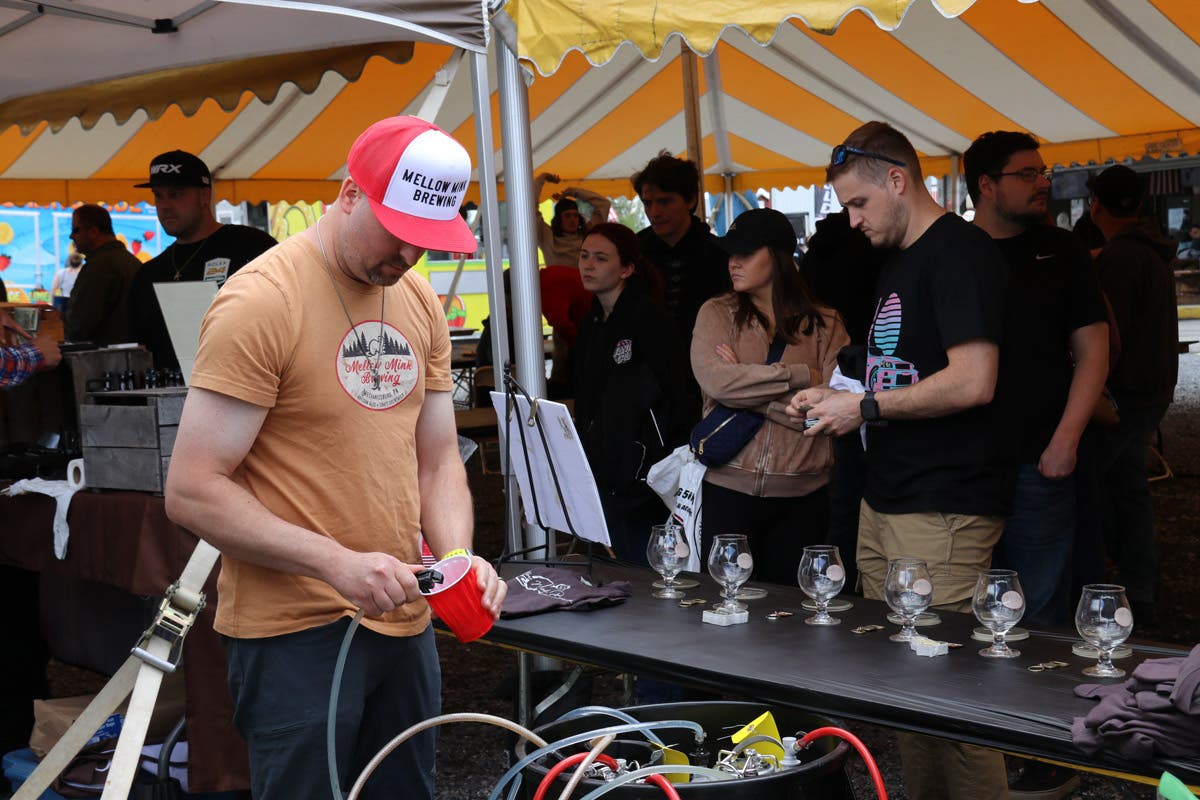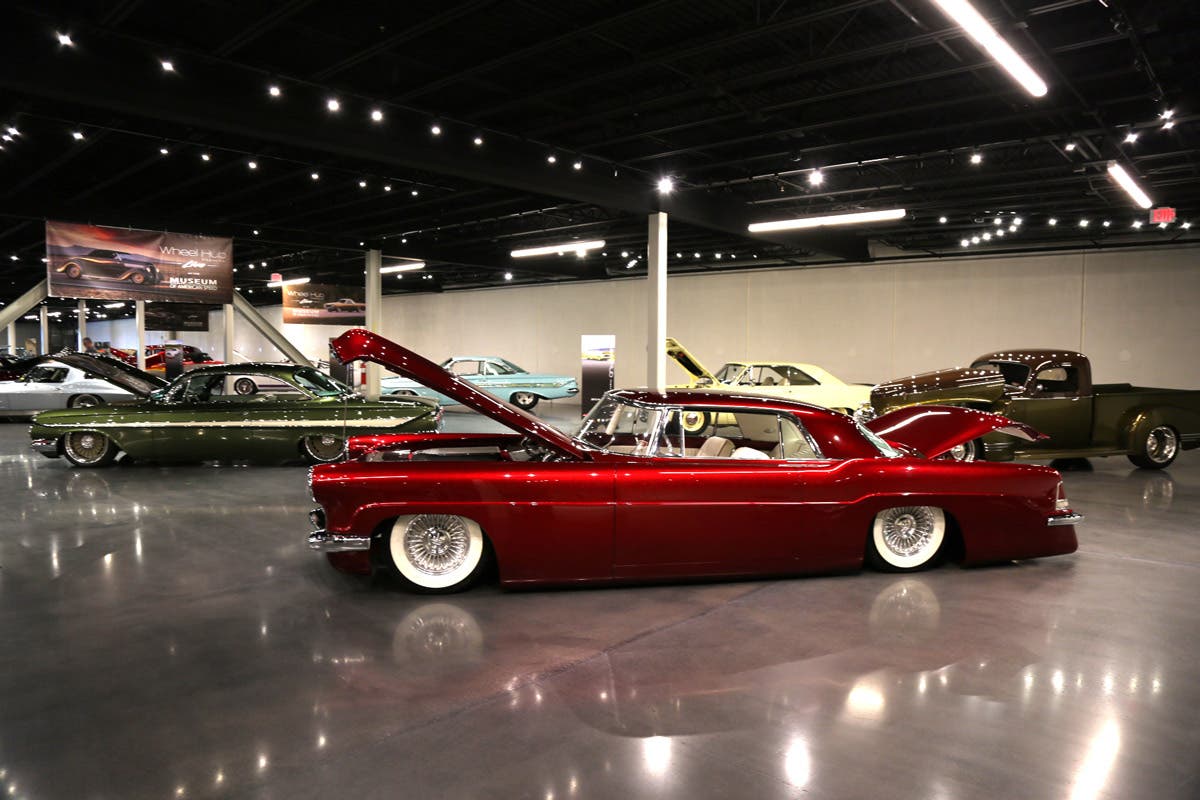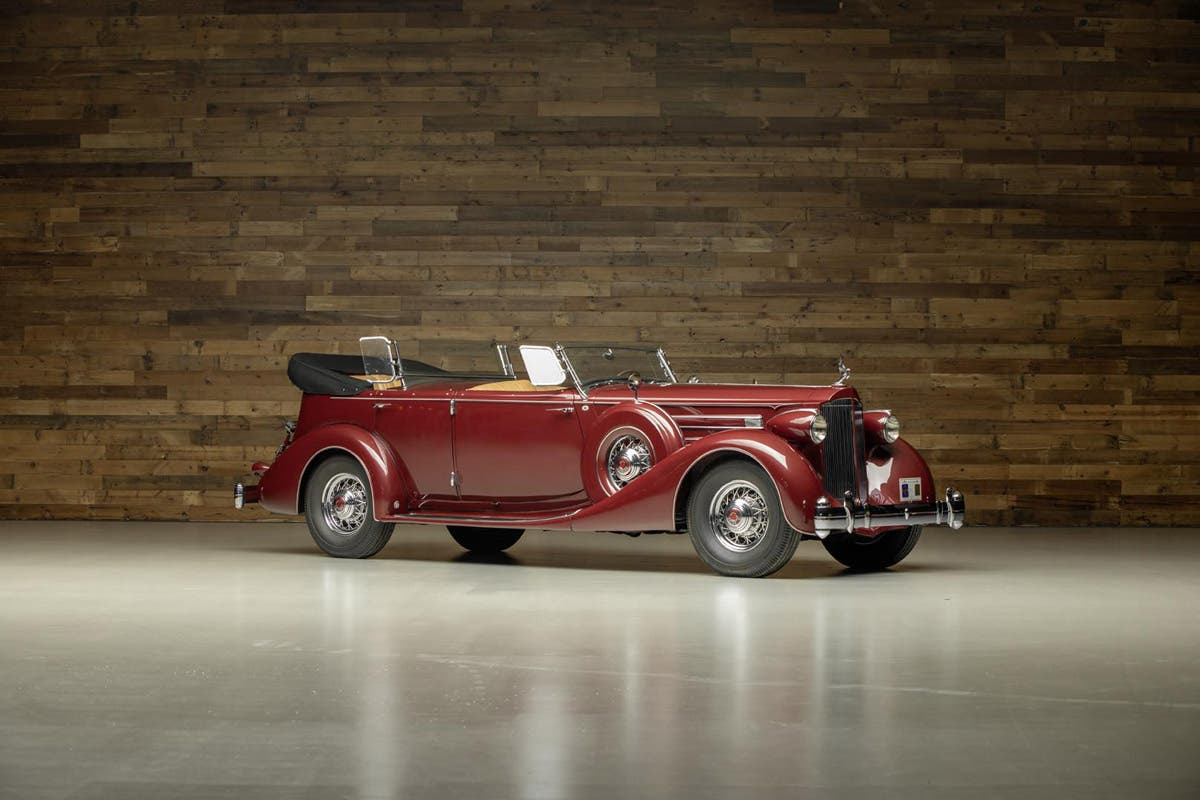Big guns in the Big Apple
By Gregg Merksamer New York’s 2015 auto show surveyed Though 20-plus press conferences were scheduled over the two days preceding the April 3rd-12th public run of the 115th anniversary New…
By Gregg Merksamer
New York’s 2015 auto show surveyed
Though 20-plus press conferences were scheduled over the two days preceding the April 3rd-12th public run of the 115th anniversary New York International Auto Show at the Jacob K. Javits Convention Center on Manhattan’s west side, several pedigreed vehicles of interest were given early off-site unveilings in pursuit of the promotional dividend that comes from being first. Lincoln’s Continental Concept led the pack Sunday, March 29. It was previewed to a select group of reporters at Harman Kardon’s flagship stereo store at Madison and 54th Street to highlight its high-end Revel audio system (there it stayed until a 3am Tuesday, when it was extracted out a window to appear on the ABC-TV morning show Live with Kelly & Michael). Jaguar’s second-generation XF sedan, already used by British movie stuntman Jim Dowdall for a dramatic, March 24 high-wire drive above London’s Canary Wharf, went to West 22nd Street in Chelsea one week later for a stateside reveal. Red-headed MAD MEN star Christina Hendricks was the guest of honor (her character, after all, landed the Jaguar ad account for Sterling Cooper).
Aided by a brief glimpse of its classically proportioned long-cowl profile in Cadillac’s February 22nd Oscars ad, Gotham’s most anticipated world debut remained the large, sleek CT6 sedan. It was revealed Tuesday evening, March 31 at a glass-walled “Greenhouse” evocatively situated where the Brooklyn Navy Yard constructed mighty warships 75 years ago. The event’s epic lavishness even extended to custom-made, Cadillac-branded seat covers for the water taxis ferrying invitees across the East River from the Ritz-Carlton hotel in lower Manhattan, while a buffet touting Lobster Tails, Wagyu Tartare, Jambon Iberico, Sea-Salted Baby Colorado Lamb Chops and Cold Poached Wild King Salmon with American Caviar Cream further affirmed GM’s bankruptcy era austerity is ancient history. The same applies more-crucially to the CT6’s ambitious product brief, putting the Mercedes S-Class, BMW 7-Series and Audi A8 in its cross hairs through such high-tech touches as pedestrian-recognizing night vision and a high-res streaming video rear view mirror that digitally eliminates the blind spots created by headrests and roof pillars.
Cadillac Brand President Johan de Nysschen — qualified to opine by his previous Infiniti and Audi gigs — asserted the CT6 had “the most advanced body structure in the world,” thanks to “state-of-the-art manufacturing and assembly techniques” that allow traditionally-disparate aluminum and steel assemblies to be combined “in a reliable, durable and repeatable manner using proprietary welding and joining technologies” running the gamut from spot, arc and laser welding to self-piercing rivets and high-strength adhesives. The payoff is a BMW 7-sized sedan of 5-Series mass, and — as showcased on the cutaway chassis seen in Brooklyn and at Javits starting Wednesday — some truly beautiful internals such as high-pressure die-cast aluminum suspension mountings, whose ultra-stiff, egg crate-like honeycombs allow the use of more-compliant springs that still deliver spirited handling in concert with active rear wheel steering, instantaneously-adjusting magnetic dampers and optional, torque-vectoring all-wheel-drive. Once the CT6 goes on sale in December, its 8-speed automatic transmission can be mated to a 2.0-liter, 265 hp turbo four; an all-new 335 hp, 3.6 liter naturally-aspirated V-6; or a 400-hp twin-turbo 3.6 claimed to be the first-ever V-6 with economy-enhancing cylinder deactivation, on top of which a plug-in hybrid was also announced at the mid-April Shanghai show. Johan de Nysschen also confirmed to a colleague of this correspondent that an even-larger V-8 Cadillac, likely designated CT8 or CT9, is “pretty much ready” and will be “totally world class” as well.
When Lincoln President Kumar Galhotra hosted an encore reveal of the Continental Concept at the Javits Center, he positioned it as being “something different from an aggressive machine” like the quasi-Teutonic CT6, quietly emphasizing “elegant beauty and smooth, effortless power” plus amenities that help busy owners “every day in their daily lives,” as exemplified by elegantly-curved E-Latch door handles “you don’t have to pull or slam” and “the way the driver’s seat accounts for the different angles at which you rest your left and right legs.” First-class air travel was the often-cited inspiration for a right side rear seat that fully reclines and deploys a footrest once the front passenger seat is motored forward at the touch of a switch, and the same was also said of the magnetically-secured Venetian leather zipper cases stowing slippers and vanities on the backs of each front seat. Other fitments in this spirit included satin headlining, polished “starburst” stereo speaker grilles, shearling wool carpet and a full-length, halo-lit center console fitting a fold-out computer desk and built-in champagne chiller, as well as a “SmartGlass” ceiling whose tinting can be manually darkened to block out 99% of UV rays and reduce cabin temperatures up to 18 degrees Fahrenheit.
As an earlier Continental Concept constructed for the 2002 auto show circuit made liberal use of 1960s JFK Lincoln styling cues, I was one of many wondering why the 2015 version seemed more Bentley-like with its bulging quarter panels and circular wheel openings. It also struck me as premature to dispense with the Zephyr-evoking “split wing” grille that’s been used as a brand identifier for just three years, replaced here with an elongated, Bugatti-like horseshoe surrounding Lincoln logo-shaped cooling slots and an illuminated center star. When I asked him one-on-one where traditional Continental DNA was most evident, Lincoln Design Director David Woodhouse replied “the Blue Rhapsody color is one connection to the old Lincolns. The Continental used in the James Bond movie GOLDFINGER was the same color, and it was also used for the Mark II’s (1953) development renderings” as Honolulu Blue (its name back then) was William Clay Ford’s favorite color and other members of “the Ford family ordered their Lincolns in this color as well.” He also stressed the Concept’s interior “is unusual in that it’s finished in this color too instead of a lighter, contrasting shade. It’s hard to shoot and light a dark interior like this, but well worth it for the results - it’s richer.” I also appreciated his directing my attention to the ten Lincoln stars incorporated into the LED headlamp clusters, and hoped this clever little flourish would be retained on the production Continental reaching dealers in a year-or-so.
Chevrolet was actually the busiest U.S. brand in terms of 2015 New York show unveilings actually staged inside the Javits Center, following up its world premiere of an all-new 2016 Malibu at 9:45 am Wednesday, April 1st with a much-altered Spark minicar 25 hours and 10 minutes later. As the current Malibu, debuted at the 2011 New York show, was widely criticized for boring styling and a cramped rear seat that weren’t fully-rectified by a rush redo just a year after it went on sale as a 2013 model, it was truly inspiring to see its successor stake a claim as the most-improved car of the 2015 exhibit. Given a blank slate “Epsilon II” platform that will also underpin the next-generation Chevrolet Impala, Buick LaCrosse, Buick Regal and Opel Insignia, the 2016 Malibu greatly benefits from a 3.6-inch wheelbase increase, a 300-pound weight reduction and tauter overhangs teamed with a slick six-window fastback, dynamically-creased body sides and a Teen Driver monitor allowing parents to receive a “report card” on their child’s behind-the-wheel behavior and even mute the stereo until their seat belts are fastened (“I wish this technology had been around when my son was learning to drive,” proclaimed GM product chief Mark Reuss). The Korean-made Spark simultaneously launched in New York and Seoul the next morning is similarly enhanced for ‘16 with a stiffer body boasting a 1.6-inch lower profile, slimmer roof pillars and more-aerodynamic and attractive frontal styling. Its Ecotec four-cylinder engine makes 16% more horsepower after a displacement bump from 1.2 to 1.4 liters, and the upgraded seats and interior surfaces are complimented by new safety kit like a standard reversing camera and optional Forward Collision, Lane Departure and Side Blind Spot Alert Systems.
It could be posited that the New York show’s importance to Asian automakers was reflected in how lunch at press days was served by Subaru on Wednesday and Mitsubishi on Thursday, assuring extra interest in their respective announcements of a major U.S. expansion of the STi (Subaru Tecnica [sic] International) performance parts operation and a more-refined and aggressively-restyled 2016 Outlander crossover. Scion, sandwiched between the Subaru and Mitsubishi stands in the Javits North pavilion, took full advantage of the spillover by showing off its $16,000 iA sedan (sharing a frugal, spirited Skyactiv engine with the Mazda2) and $20,000 iM five-door hatchback (basically an Americanized version the European Toyota Auris). Lexus took to the Level 4 Galleria for Wednesday’s world debut of a “more emotional” fourth-generation Lexus RX crossover (newsworthy as the model accounts for a third of Lexus sales and commands a 25% share of a segment counting 16 other competitors), after which its corporate parent Toyota occupied the hall for Thursday’s intro of a new RAV4 hybrid using electric motors instead of a driveshaft to power the rear axle.
Honda turned even more heads with a muscular, lime green metallic concept version of the 2016 Civic coupe, heralding how its North American R&D unit is heading global Civic development for the first time (enthusiasts also rejoiced when told the 306-hp Type R and charismatic 5-door hatch will be coming to the U.S.). Nissan, usefully, had a half-dozen pre-production Maxima sedans on hand for the eighth-generation model’s world premiere by company President & CEO Carlos Ghosn, who said its “four door sports car” status would be re-asserted via a “V-motion” face, undulating flanks and a “floating” roof panel clothing a 2.2 inch-longer and 25% more rigid body that still manages to shed 82 pounds through the increased use of high-strength steel. The “command central” cockpit’s driver-angled displays and fatigue-fighting “Zero Gravity” front seats were reportedly inspired by an F-18 Hornet jet the designers examined at the U.S. Navy base in Pensacola, Florida, while an optional Driver Attention Alert system “learns” the owner’s habits and warns of drowsiness with an audible beep and a coffee cup dashboard icon.
Even if the Nissan Maxima promised plenty of entertainment at its $32,410 starting price, the five-block-long Javits Center offered ample space and opportunity to admire far more dedicated, costly and delectably-impractical sporting machines. Porsche Cars North America President Detlev von Platen, proud to credit New York buyers with the brand’s first U.S. sales in 1950, courted Cayenne and Panamera-hating purists with a new Boxster Spyder where a stick-shift is the sole gearbox choice and weight is minimized by fitting a basic manual soft-top while air conditioning and a stereo become optional at its $82,100 MSRP. Alfa Romeo’s exhibit teamed its exciting new 4C Coupe and Spider with a carbon fiber show chassis and a Concours-caliber historic display comprising a 1933 8C 2300 Monza open cockpit racer bearing Scuderia Ferrari’s team shield; a fiberglass-bodied 1965 TZ2 competition coupe that was one of just a dozen built by Carlo Chiti’s Autodelta to a design by Ercole Spada of Zagato; and an aluminum-bodied, Scaglione-designed 1968 33 Stradale sporting “butterfly” doors whose windows curved futuristically into the roof. McLaren’s first-ever New York auto show press conference witnessed the world debut of its $185,000 “entry level” 570S, which earns its name from a mid-mounted 3.8-liter twin-turbo V8 making 570PS or 562 hp. The Woking, England company’s centrally-sited stand also featured a 1997 F1 GT “long tail” that was one of only three built around a 6-liter BMW V-12 making 627 HP; Chris Gate, a McLaren stand crew member who also pointed out all the BMW switchgear surrounding the central driver’s seat, recalled “there were a couple of guys crying on seeing it arrive as a poster of it was in their childhood bedrooms.”
The final round of New York auto show press conferences preceding Thursday evening’s charity gala and Good Friday’s public opening are traditionally devoted to small start-ups that are always up to something original. The trek to Elio Motors’ tiny, first floor booth beside the FDNY’s 150th anniversary exhibit was rewarded with the novel sight of a three-wheeled, three-cylinder, front-wheel-drive commuter car with Creamsicle paintwork, cycle fenders, twin tandem seating and a promised starting price of $6,800, with the goal of building 250,000 annually at GM’s old Shreveport, Louisiana plant by the first half of 2016. Having previously worked on crash simulations and finite element analysis for the automotive supplier Johnson Controls, company founder Paul Elio decided to create his own econocar because “most people can’t afford to buy an F150 pickup and a Prius. For most folks this will be an ‘and’ purchase instead of an ‘or’ purchase,” especially as “the cost can be added to your gasoline purchases in installments instead of taking out a car loan.” He also added every component “comes from a who’s who of global suppliers already building the part, such as glass from Guardian and airbags from Takata. Comau, affiliated with Fiat, will handle automation and welding at the factory,” while “Pep Boys will handle servicing at 800 locations from day one” after the buyer takes delivery from a network of company-owned stores that can install custom options in just nine hours. Elio also claimed his venture is “the second most-successful crowdfunding campaign in Internet history,” garnering 41,000 reservations worth $280 million retail. Only time will tell, of course, if he’s a 21st Century Walter Chrysler or a web age Preston Tucker!
Here are some more highlights from the show:
OLD CARS WEEKLY readers seeking a bird’s eye view of the 2015 New York International Auto Show of the sort once reserved for Javits Center pigeons should go to http://www.autoshowny.com/sights/videos/ for a pre-opening fly-over filmed with a custom-designed drone fitting 12 inch rotors and a 15mm super speed wide angle cine lens shooting 4K footage that’s twice the resolution of HD. As the display touted nearly 1,000 vehicles spread across a million square feet, the 92-second clip is billed as one of the largest indoor drone shoots to date. “We’re always looking for new ways to highlight the excitement of the Auto Show,” said New York Show Chairman John LaSorsa. “Using drones,” he added, “helps capture the experience of the Show and bring it to life outside the walls of the convention center. It’s also a great way for us to showcase the innovative spirit of the Show and its exhibitors.”








